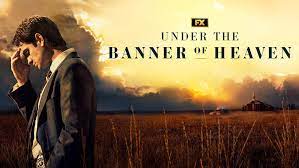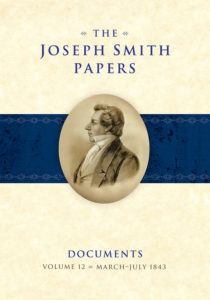
(Updated 4/28/2022 – Please see our new post at https://www.fairlatterdaysaints.org/blog/2022/04/28/under-the-banner-of-heaven-fact-vs-fiction)
“Under the Banner of Heaven” is not only a slap in the face of modern Latter-day Saints but also a misrepresentation of religion in general. – Robert L. Millet
This book is not history, and Krakauer is no historian. He is a storyteller who cuts corners to make the story sound good. – Mike Otterson
Although the book may appeal to gullible persons who rise to such bait like trout to a fly hook, serious readers who want to understand Latter-day Saints and their history need not waste their time on it. – Richard E. Turley Jr.
[H]is obvious biases against both religion in general and the Church of Jesus Christ in particular have made the book nothing more than a flawed, sensationalistic work… – Craig L. Foster
A book called Under the Banner of Heaven: A Story of Violent Faith by Jon Krakauer was published in 2003. It has now been made into a miniseries that will be available for streaming from Hulu later this month. Here are some resources available regarding the claims made in the book:
- FAIR Response to Under the Banner of Heaven: A Story of Violent Faith
- Church Response to Jon Krakauer’s Under the Banner of Heaven
- The Krakauer Journal by Allen Wyatt
- Faulty History: A Review of Under the Banner of Heaven: A Story of Violent Faith by Richard E. Turley
- Reflections on Mountain Meadows by Richard E. Turley, given at the 2007 FAIR Conference
The Deseret News now has an article on the series:
Have a question? Contact us here.
 Rebekah Clark is co-author of the book Thinking Women: A Timeline of Suffrage in Utah and works as a historian for Better Days, a nonprofit public history organization dedicated to expanding education about Utah women’s history. She holds a law degree from the J. Reuben Clark Law School at Brigham Young University, studied as a visiting student at Harvard Law School, and practiced law in Boston for four years. She graduated with a degree in American History and Literature from Harvard University, where her honors thesis focused on Utah women’s activism in the national suffrage movement. She has worked at the LDS Church History Department and taught as an online adjunct faculty member at BYU-Idaho. Her work has appeared in journals such as the Utah State Historical Quarterly, the Journal of Mormon History, BYU Studies, Pioneer Magazine, and BYU Law Review and in podcasts by the National Conference of State Legislatures, the Church News, What’s Her Name, Zion Art Society, and the Maxwell Institute for Religious Scholarship. In addition to her work with Better Days, she currently serves on the board of the Mormon Women’s History Initiative Team. Rebekah lives in Highland with her husband Andrew and their five children.
Rebekah Clark is co-author of the book Thinking Women: A Timeline of Suffrage in Utah and works as a historian for Better Days, a nonprofit public history organization dedicated to expanding education about Utah women’s history. She holds a law degree from the J. Reuben Clark Law School at Brigham Young University, studied as a visiting student at Harvard Law School, and practiced law in Boston for four years. She graduated with a degree in American History and Literature from Harvard University, where her honors thesis focused on Utah women’s activism in the national suffrage movement. She has worked at the LDS Church History Department and taught as an online adjunct faculty member at BYU-Idaho. Her work has appeared in journals such as the Utah State Historical Quarterly, the Journal of Mormon History, BYU Studies, Pioneer Magazine, and BYU Law Review and in podcasts by the National Conference of State Legislatures, the Church News, What’s Her Name, Zion Art Society, and the Maxwell Institute for Religious Scholarship. In addition to her work with Better Days, she currently serves on the board of the Mormon Women’s History Initiative Team. Rebekah lives in Highland with her husband Andrew and their five children. Brittany Chapman Nash is a specialist in Latter-day Saint women’s history and coedited the award-winning four-volume Women of Faith in the Latter Days series and Fearless in the Cause: Remarkable Stories of Women in Church History. She holds a bachelor’s degree in Humanities from Brigham Young University and a master’s degree in Victorian Studies from the University of Leicester in England. Brittany worked as a historian for ten years in the Church History Department of The Church of Jesus Christ of Latter-day Saints and has served on committees in the Mormon History Association, Better Days 2020, and Young Women general board. She is a member of the Mormon Women’s History Initiative Team, a group dedicated to popularizing the history of Latter-day Saint women. Brittany lives with her husband, Peter, and two young children in Salt Lake City, Utah, where she enjoys working at home with her little ones. She loves learning people’s stories, helping plants to grow, and watching cooking shows with her husband.
Brittany Chapman Nash is a specialist in Latter-day Saint women’s history and coedited the award-winning four-volume Women of Faith in the Latter Days series and Fearless in the Cause: Remarkable Stories of Women in Church History. She holds a bachelor’s degree in Humanities from Brigham Young University and a master’s degree in Victorian Studies from the University of Leicester in England. Brittany worked as a historian for ten years in the Church History Department of The Church of Jesus Christ of Latter-day Saints and has served on committees in the Mormon History Association, Better Days 2020, and Young Women general board. She is a member of the Mormon Women’s History Initiative Team, a group dedicated to popularizing the history of Latter-day Saint women. Brittany lives with her husband, Peter, and two young children in Salt Lake City, Utah, where she enjoys working at home with her little ones. She loves learning people’s stories, helping plants to grow, and watching cooking shows with her husband.
 Hanna Seariac is a MA student in Greek and Latin at Brigham Young University. She is writing a book on the history of the priesthood and another one that responds systematically to anti-LDS literature. She works as a research assistant on a biblical commentary and as a producer on a news show. She values Jesus Christ, family, friends, hiking, baking, and really good ice cream.
Hanna Seariac is a MA student in Greek and Latin at Brigham Young University. She is writing a book on the history of the priesthood and another one that responds systematically to anti-LDS literature. She works as a research assistant on a biblical commentary and as a producer on a news show. She values Jesus Christ, family, friends, hiking, baking, and really good ice cream.
 Scott A. Hales has been a historian/writer for the Church History Department since 2015. He currently works as a writer and story editor for Saints: The Story of the Church of Jesus Christ in the Latter Days, the new four-volume narrative history of the Church. He has a BA in English from Brigham Young University and an MA and PhD in American Literature from the University of Cincinnati. He has published scholarly articles on Mormon and American literature in several academic journals, including Religion and the Arts and The Journal of Transnational American Studies. He currently lives in Eagle Mountain, UT with his wife and five children.
Scott A. Hales has been a historian/writer for the Church History Department since 2015. He currently works as a writer and story editor for Saints: The Story of the Church of Jesus Christ in the Latter Days, the new four-volume narrative history of the Church. He has a BA in English from Brigham Young University and an MA and PhD in American Literature from the University of Cincinnati. He has published scholarly articles on Mormon and American literature in several academic journals, including Religion and the Arts and The Journal of Transnational American Studies. He currently lives in Eagle Mountain, UT with his wife and five children.